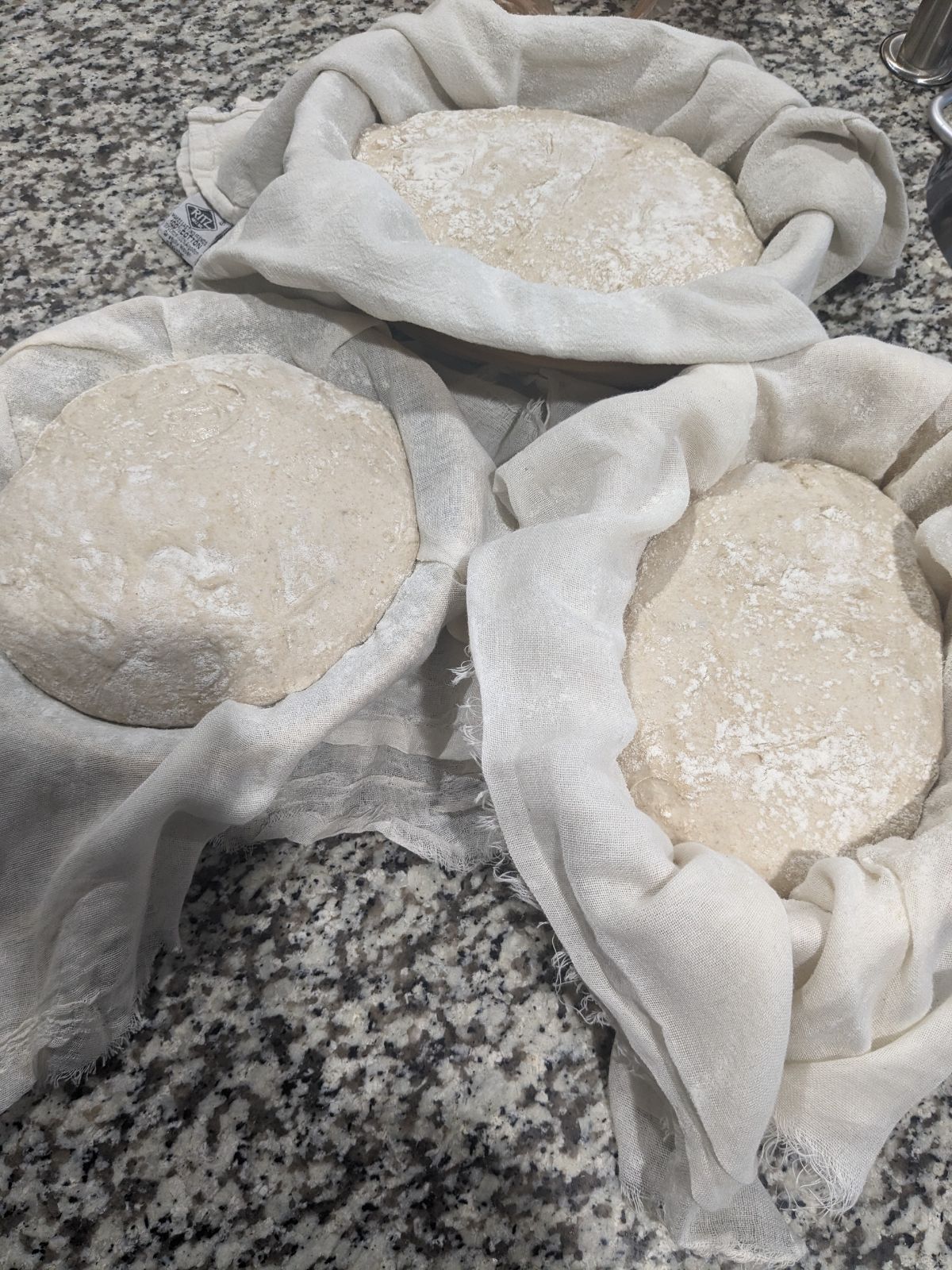March 22, 2024 - 7:56am

Good morning starshine
I am not loving this 80% + hydration dough. So hard to shape. Additionally, I just know they will deflate as soon as I turn them out or at the latest score. I'll catch you all on the rebound with the results.



This seems like a good opportunity to ask a question, if you don't mind.
Why is dough put in a banneton or other proofing basket upside down and then flipped out, right-side up, as opposed to sitting right-side up on parchment paper and being lifted out of the basket, without disturbance?
The banneton is either lined with a floured cloth or the banneton itself is dusted heavily with flour to prevent sticking. Either technique insures the bottom side of the dough touching the cloth or banneton recieves a drying effect both from the flour/cloth as well as the air circulation provided by the banneton itself.
This drying out provides an easier surface for scoring. Another technique many of us use instead of intentional scoring is to shape roughly so that the " scoring" is freeform when the loaf bursts naturally. Hope this clarifies and answers your question. c
I'm not convinced that this is a benefit. I proof most of my loaves free-standing, covered by a plastic sheet. I can dry out the surface to help with scoring by uncovering the loaf for the last 15 minutes or so of proofing. In a larger-scale bakery operation, you might want bannetons for convenience since you can move or stack them in a convenient place for proofing or retarding. Drying out would be a side-effect. In a bakery, bannetons would also provide a uniform size and shape to each loaf, something I don't need to worry about at home.
My loaves often develop a shiny appearance during baking, but not when I use a banneton. I happen to like that appearance even though it doesn't add to the eating experience.
I don't know the "real" reason, but here are a few that count for me:
1. Inverted, the to-be top surface will be smooth and may have an attractive pattern. If the loaf were placed top-up, you wouldn't get that.
2. The parchment paper would have large folds or wrinkles unless you went to a lot of trouble to cut the parchment paper to fit.
Historically bakers would not have had parchment paper to bake on so they wouldn't have been able to lift the loaf up with a sling. So tradition, in a way, may also be involved.
TomP
Putting the bannetons in the freezer for 40 minutes or so before baking will help then hold shape when turned out. Impractical at any sort of scale, but this cheaty method works.
-Jon
Especially regarding this particular formula which calls for a very short cold ferment. Bring down the temperature quickly would not be optimal. Thinking out loud, I am not sure I would want to bring the temperature down quickly even with a long slow cold ferment.